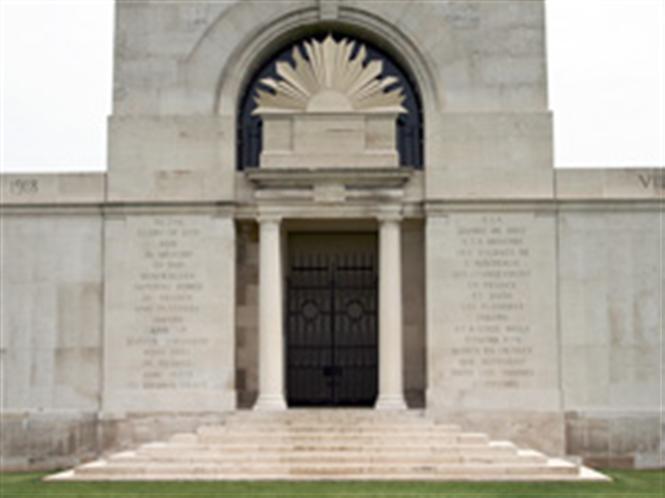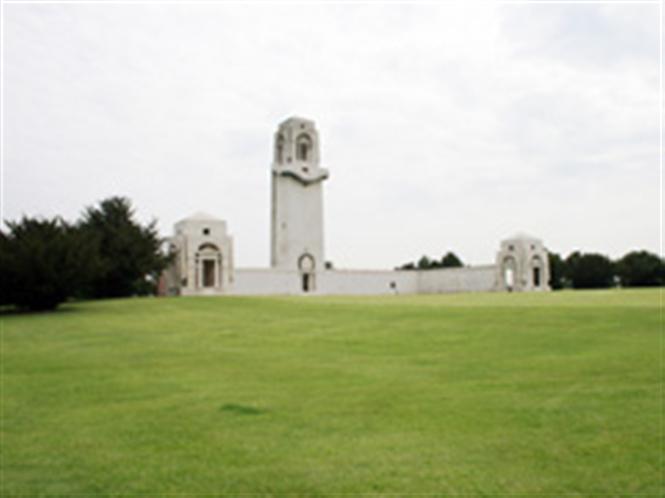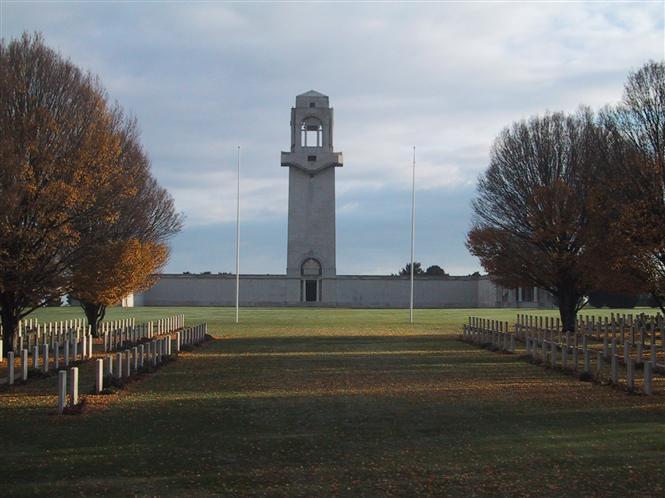CWGC Memorial To The Missing, Villers-Bretonneux Military Cemetery
Description
Known as The Australian National Memorial: it is a large central tower flanked by two wing walls carrying the commemorative panels containing the names of over 10,000 Australians who died in France during the First World War and have no known grave.
History
Villers-Bretonneux became famous in 1918, when the German advance on Amiens ended in the capture of the village by their tanks and infantry on 23 April. On the following day, the 4th and 5th Australian Divisions, with units of the 8th and 18th Divisions, recaptured the whole of the village and on 8 August 1918, the 2nd and 5th Australian Divisions advanced from its eastern outskirts in the Battle of Amiens.
The memorial stands within Villers-Bretonneux Military Cemetery, which was made after the Armistice when graves were brought in from other burial grounds in the area and from the battlefields. The memorial is the Australian national memorial erected to commemorate all Australian soldiers who fought in France and Belgium during the First World War, to their dead, and especially to those of the dead whose graves are not known. The 10,770 Australian servicemen actually named on the memorial died in the battlefields of the Somme, Arras, the German advance of 1918 and the Advance to Victory.
Construction Information
Both cemetery and memorial were designed by Sir Edwin Lutyens
Location
Villers-Bretonneux, France.
The Memorial is situated a few kilometres north of Villers-Bretonneux on the D23. This memorial stands within Villers-Bretonneux Military Cemetery.
Access to the tower at the memorial will be restricted during bad weather conditions. During working hours wheelchair access to Villers-Bretonneux Cemetery, in which the memorial stands, is possible by an alternative entrance.



